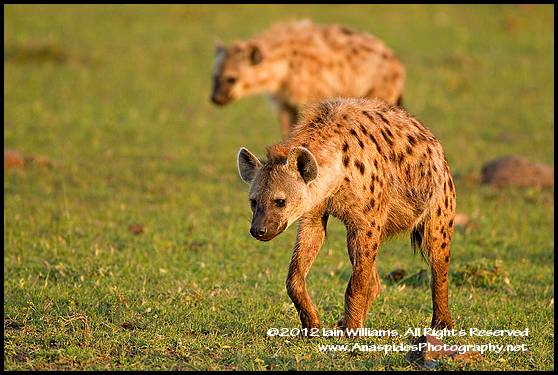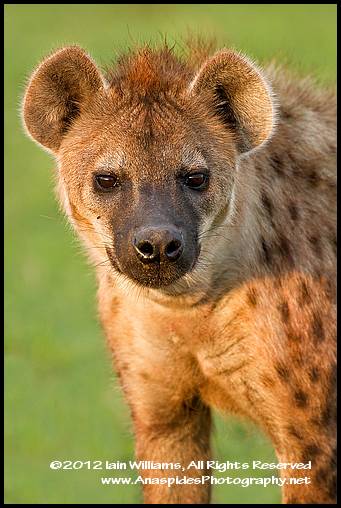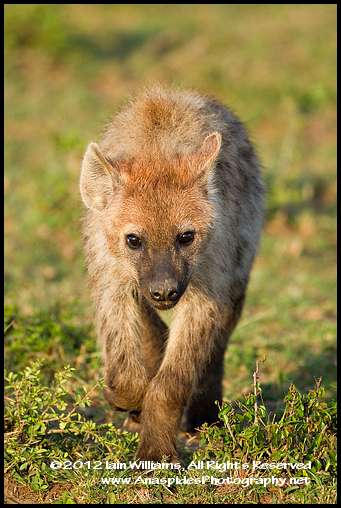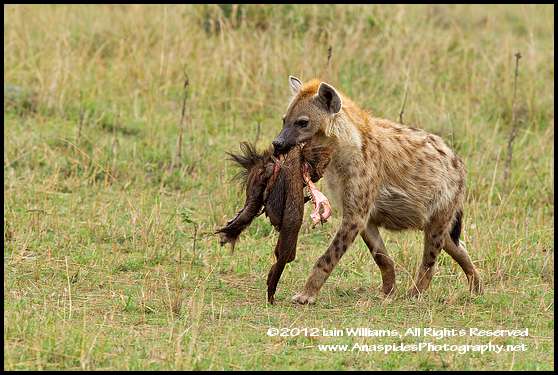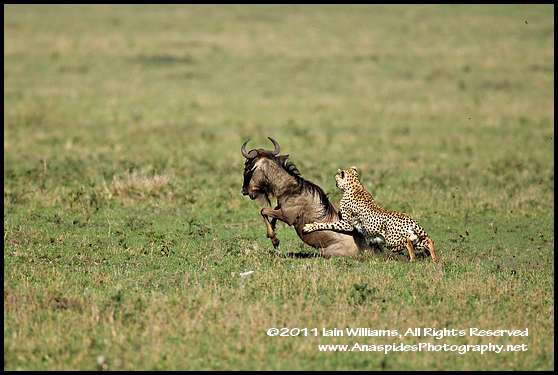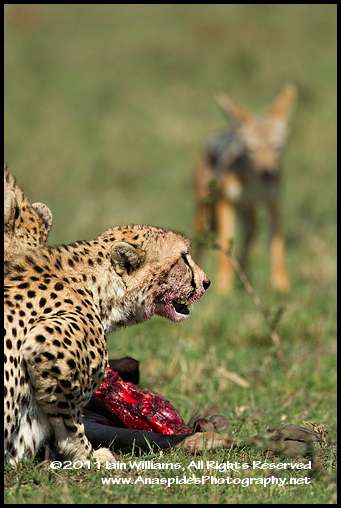The Clan Den, Mating & Baby Hyenas, Kenya - East Africa
 Thursday, March 8, 2012 at 11:19PM
Thursday, March 8, 2012 at 11:19PM  The Clan Den
The Clan Den
The clan's social life revolves around a communal den. While some clans may use particular den sites for years, others may use several different dens within a year or several den sites simultaneously. Spotted hyena dens can have more than a dozen entrances, and are mostly located on flat ground. Spotted hyenas rarely dig their own dens, having been observed for the most part to use the abandoned burrows of wathogs, springhares and jackals.
Dens have large bare patches around their entrances, where hyenas move or lie down on. Because of their size, adult hyenas are incapable of using the full extent of their burrows, as most tunnels are dug by cubs or smaller animals. The structure of the den, consisting of small underground channels leading to a mating spacious end-chamber, is likely an effective anti-predator device which protects cubs from predation during the absence of the mother.
Dens are used mostly by several females at once, and it is not uncommon to see up to 20 cubs at a single site.
 Mating
Mating
The spotted hyena is a non-seasonal breeder and is promiscuous; no enduring pair bonds are formed. Members of both sexes may copulate with several mates over the course of several years. Males will show submissive behaviour when approaching females in heat, even if the male outweighs its partner.
Females usually favour younger males born or joined into the clan after they were born. Older females show a similar preference, with the addition of preferring males with whom they have had long and friendly prior relationships. Passive males tend to have greater success in courting females than aggressive ones. Copulation in spotted hyenas is a relatively short affair, which typically only occurs at night with no other hyenas present.
This Looks Difficult
The mating process is complicated, as the female's reproductive tract is entered and exited through her pseudo-penis rather than directly through the vagina, which is blocked by the false scrotum and testes. Once the female retracts her clitoris, the male enters the female by sliding beneath her, an operation facilitated by the penis' upward angle. Once this is accomplished, a normal mating stance is adopted.
 Steroids
Steroids
The length of the gestation period tends to vary greatly, though 110 days is the average length of time. In the final stages of pregnancy, dominant females provide their developing offspring with higher androgen levels than lower-ranking mothers do. The higher androgen levels - the result of high concentrations of ovarian androstenedione - are thought to be responsible for the extreme masculinization of female behaviour and morphology. This has the effect of rendering the cubs of dominant females more aggressive and sexually active than those of lower ranking hyenas; high ranking male cubs will attempt to mount females earlier than lower ranking males.
The average litter consists of two cubs, with three occasionally being reported. Males take no part in the raising of young. Parturition is difficult, as females give birth through their narrow clitoris, and spotted hyena cubs are the largest carnivoran young relative to their mothers' weight. During parturition, the clitoris ruptures in order to facilitate the passage of young, and may take weeks to heal.
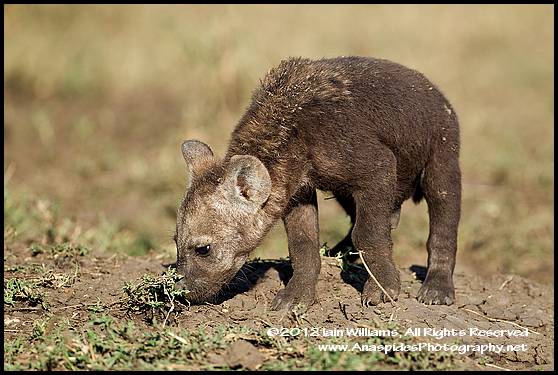 Siblicide is 25%
Siblicide is 25%
Cubs are born with soft, brownish black hair, and weigh 1.5 kg on average. Unique among carnivorous mammals, spotted hyenas are also born with their eyes open and with 6–7 mm long canine teeth and 4 mm long incisors. Also, cubs will attack each other shortly after birth. This is particularly apparent in same sexed litters, and can result in the death of the weaker cub. This neonatal siblicide kills an estimated 25% of all hyenas in their first month.
Male cubs which survive grow faster and are likelier to achieve reproductive dominance; The milk provided by the hyena mother has the highest protein content of any terrestrial carnivore, and its fat content is second only to that of the polar bear and sea otter.
Cubs will nurse from their mother for 12–16 months, though they can process solid food as early as three months. Mothers do not regurgitate food for their young. Females are very protective of their cubs, and will not tolerate other adults, particularly males, approaching them.
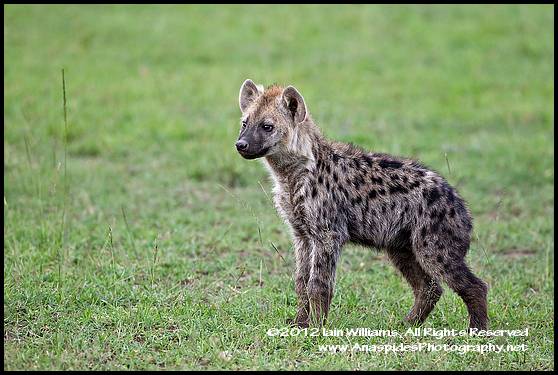 Cubs learn Social Behaviour Very Quickly
Cubs learn Social Behaviour Very Quickly
Spotted hyenas exhibit adult behaviours very early in life; cubs have been observed to ritually sniff each other and mark their living space before the age of one month. Within ten days of birth, they are able to move at considerable speed. Cubs begin to lose the black coat and develop the spotted, lighter coloured pelage of the adults at 2–3 months. They begin to exhibit hunting behaviours at the age of eight months, and will begin fully participating in group hunts after their first year. Spotted hyenas reach sexual maturity at the age of three years.
A Word About The Photographs
The photographs in this sequence were taken at a one of two hyena dens. You will note that the colours of the hyenas are dull and rather flat looking. This is because of the dust that is present within the coat's fur. This region in Kenya is rather dusty, except after rain or when the light is low on the horizon.
Hyena Coverage
In the last thee posts we've looked in depth at the spotted hyena; I like the animal. But enough is enough and its time to farewell the hyena. However, a short video will be posted in the Video Section in the not distant future
REFERENCES: Heptner, V. G.; Sludskii, A. A. (1992). Mammals of the Soviet Union: Carnivora (hyaenas and cats), Volume 2.



